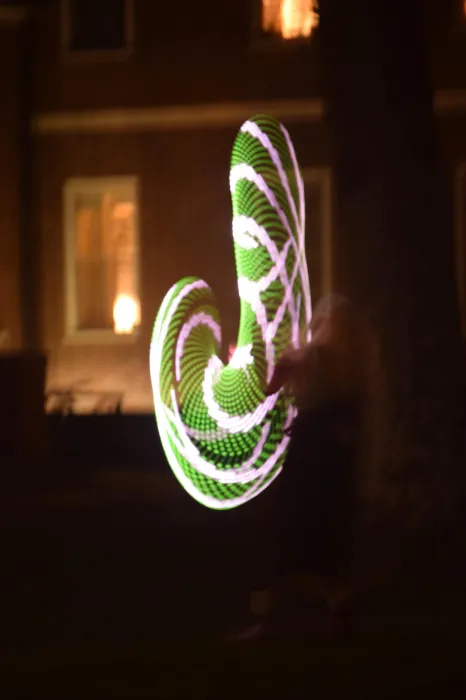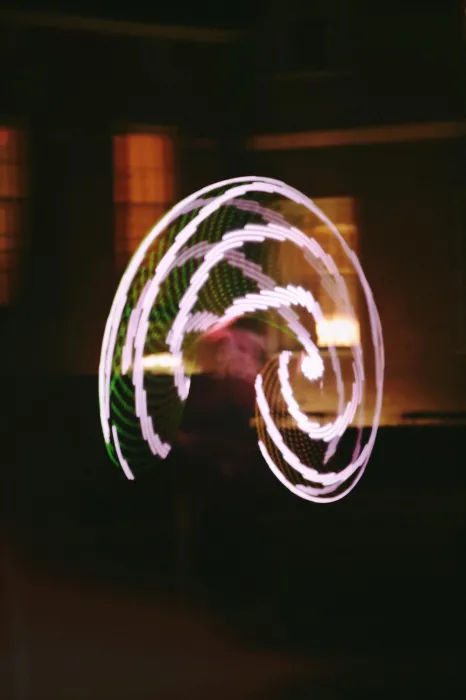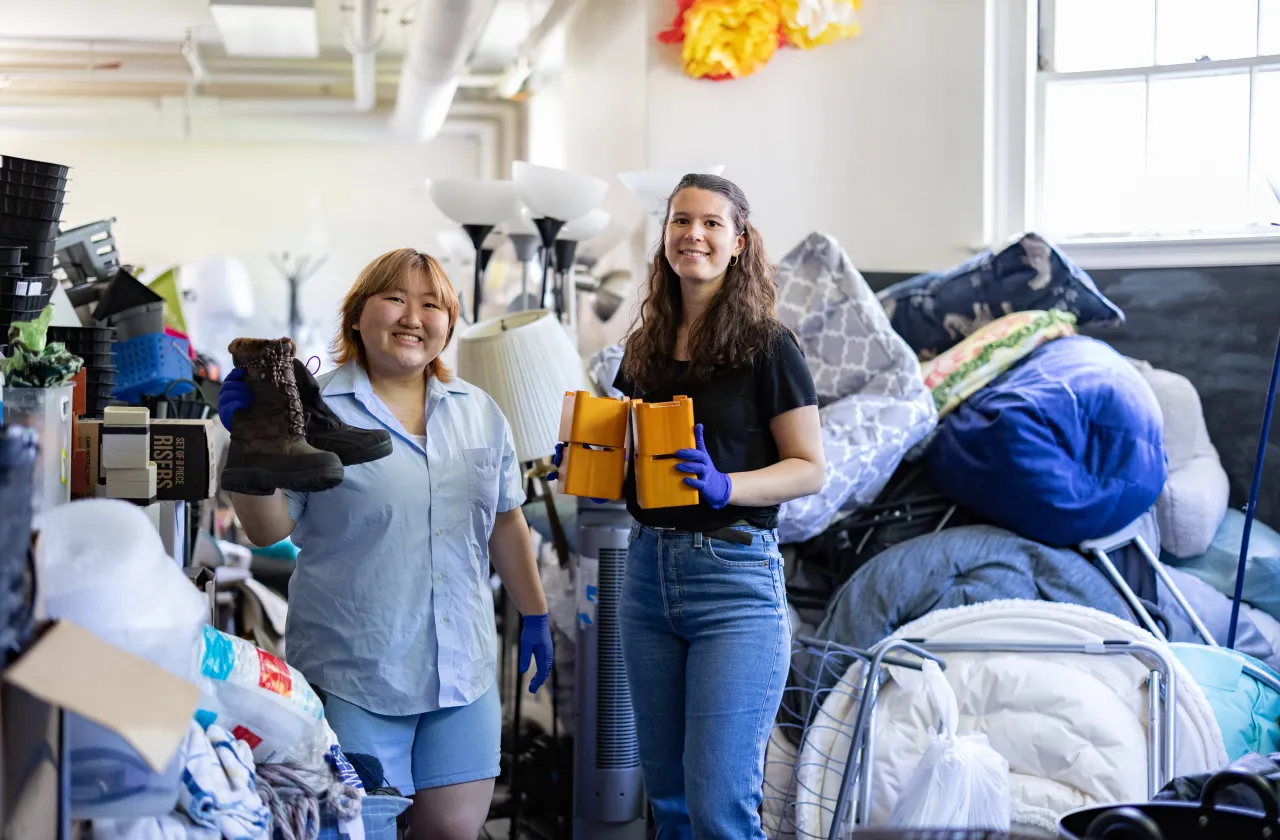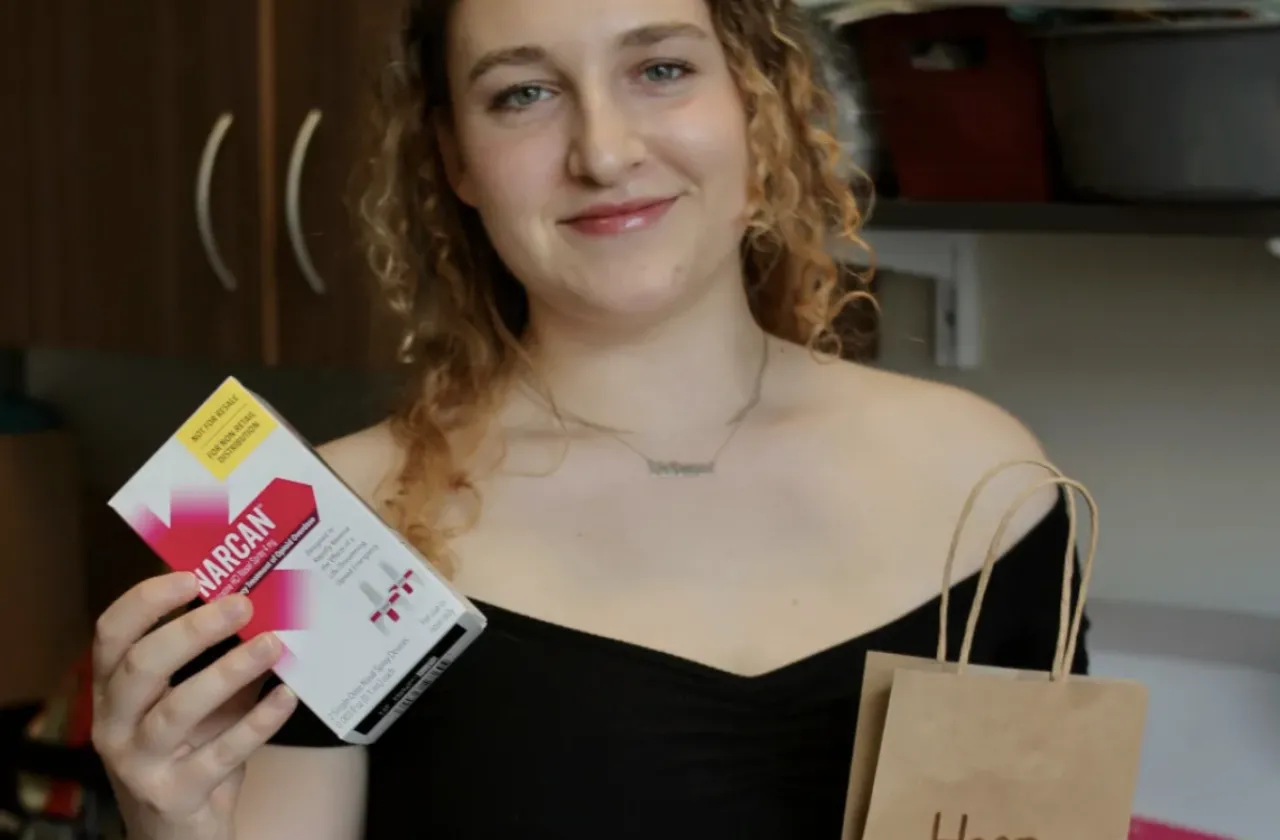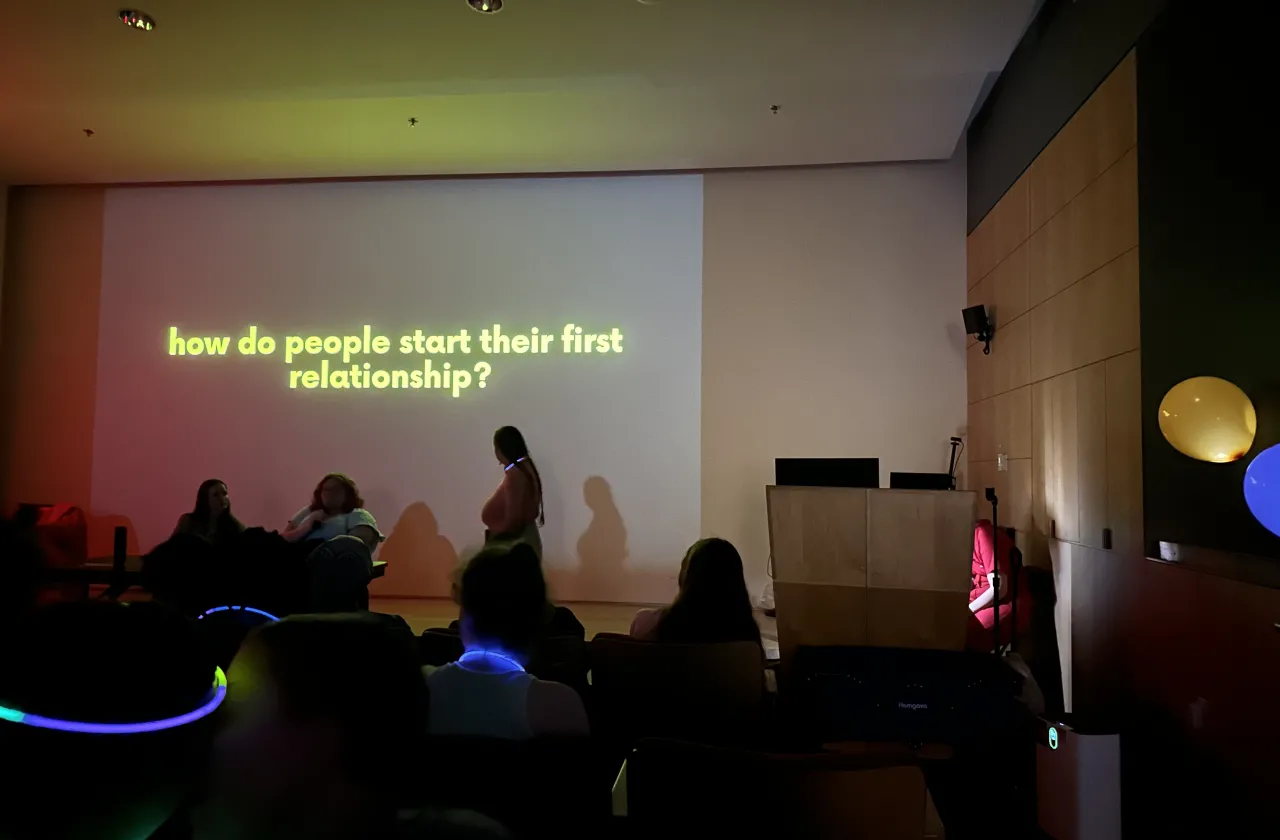Full Circles of Radical Joy
Una Fonte ’26 shares her spin on hula hoop dance

Published April 15, 2024
Una Fonte ’26 dances across the Ainsworth classroom with a spinning yellow hula hoop. She rolls the hoop across both hands and behind her back, raises it over her head like a giant serving plate, and pulls a move called “ghosting” where both hands appear to be holding the ring, but only one is moving it.
“In other forms of dance where you pick a point and spot, but in hoop, you always follow the hula hoop itself,” she tells the two beginners in her Tuesday evening Get Fit class, “Magic and Strength of Hula Hoop.”
Fonte is many things: An environmental science and policy major, one of the co-founders of the disability justice student advocacy and support group Dis-Organizing, and an advocate for the wide range of people who, like her, have some form of legal blindness or visual impairments. It is in the flow art of hula hoop dance, which she both practices for herself and teaches to others, that Fonte says she finds “a sense of radical joy.”
“When I dance I like to feel powerfully intentional in my movement,” she says. “I like to know that where I [move] has purpose and strength within it and at the same time I like to feel light and airy— which are kind of contradictory things, but it’s nice to put those contradictions together and move with them.”
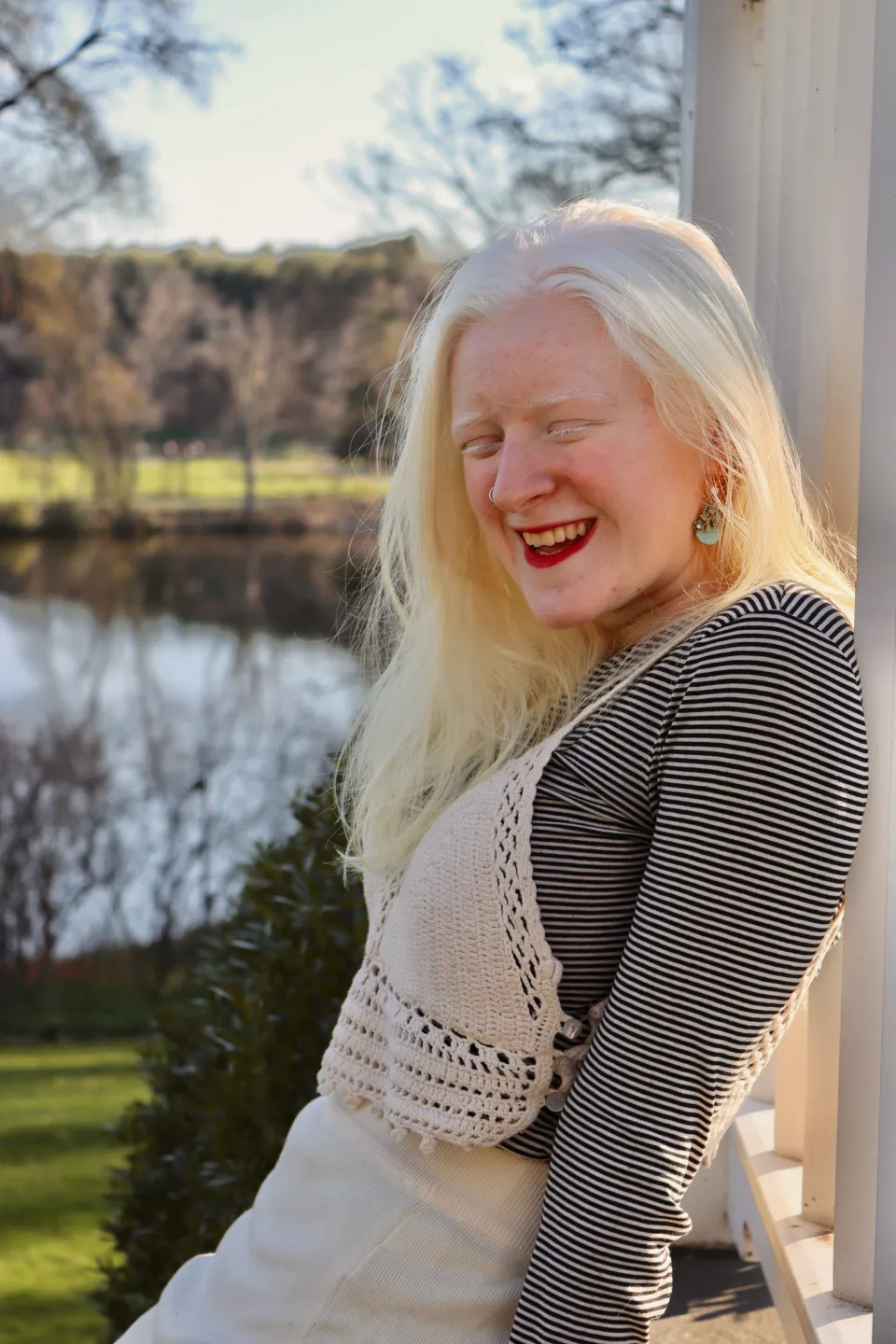
Fonte first dipped a toe into the practice of hula hoop dancing while attending middle school in Vergennes, VT. At the time, Fonte had been longing for formal dance training. ”I’d begged and begged my mother for dance classes for years,” she says. “I’m from the rural middle of nowhere, it would have been an hour drive, and she would have had to get out of work early. It wasn’t happening.”
Her luck changed when an Obama administration era program, called the 21st Century Community Learning Centers, brought a grant to her small Vermont school district. ”My school suddenly got this amazing afterschool program called Fusion where you could sign up for any class you wanted for free,” says Fonte. ”I saw the word ‘dance’ and that’s all I saw and I signed up.”
The so-called “dance class“ turned out to be lessons in hula hoop dance. Led by teacher Rebecca Brighton, who would become her mentor, Fonte practiced the basics of movements such as the hand spin, beginner’s vortex, and coin flip. Throughout class, she and Edelman would work on breathing and talk about Fonte’s preteen life.
The practice also gave Fonte an outlet to be herself, to express in physical terms her nascent idea that “your body is not a bad thing, your body is a joyful thing . . . and you can move it in ways that feel good and powerful and beautiful and delicate and handsome and whatever you want.”
In time, her self-confidence and creativity grew. “Back in middle school I wasn’t thinking of it in these liberatory terms, but I knew I was joyful and I knew in a lot of places I wasn’t,” Fonte says now. “My high school was relatively homogeneous rural Vermont and I’m disabled, I am queer. I was queer and not out. Having this thing that could be mine and that I could feel joyful about and didn’t feel like I had to hide, was really powerful at that time.”
The program—and Fonte—evolved until she became first a teaching assistant and then a teacher herself. As she practiced, Fonte also came to learn about hoop dancing history, including parallels with the hoop dances of indigenous communities. Although her art differed in style and technique from traditional dances, Fonte says she became “very aware of not wanting to appropriate.”
”When I teach classes now, I let people know that there are two different styles and why I’m practicing the one I am,” she says. “I don’t want to contribute to erasure, so I’m obviously going to acknowledge various parallels, so I’m not going to be teaching [indigenous dance moves].”
While she envisions a career based on her environmental policy interests, Fonte notes that a recent encounter with a professional flow artist who performs at festivals across the country made her realize that there might be other opportunities for her art.
In the meantime, Fonte says she will keep dancing—and teaching. As the weather warms, you might even spot her on campus, trying out a few new LED hoops at dusk. ”I think people think, ‘That’s a little weird.‘ But I like this so much that I don’t care. It also makes me realize why would anyone want to judge someone for something that brings so much joy?” she says.
“When you are joyful despite the world not wanting you to be, that is a radical and powerful act.”
Campus portraits by Liliana Hetherman ‘25. LED hula hoop photos of Fonte dancing by Emily Kim ‘25.
